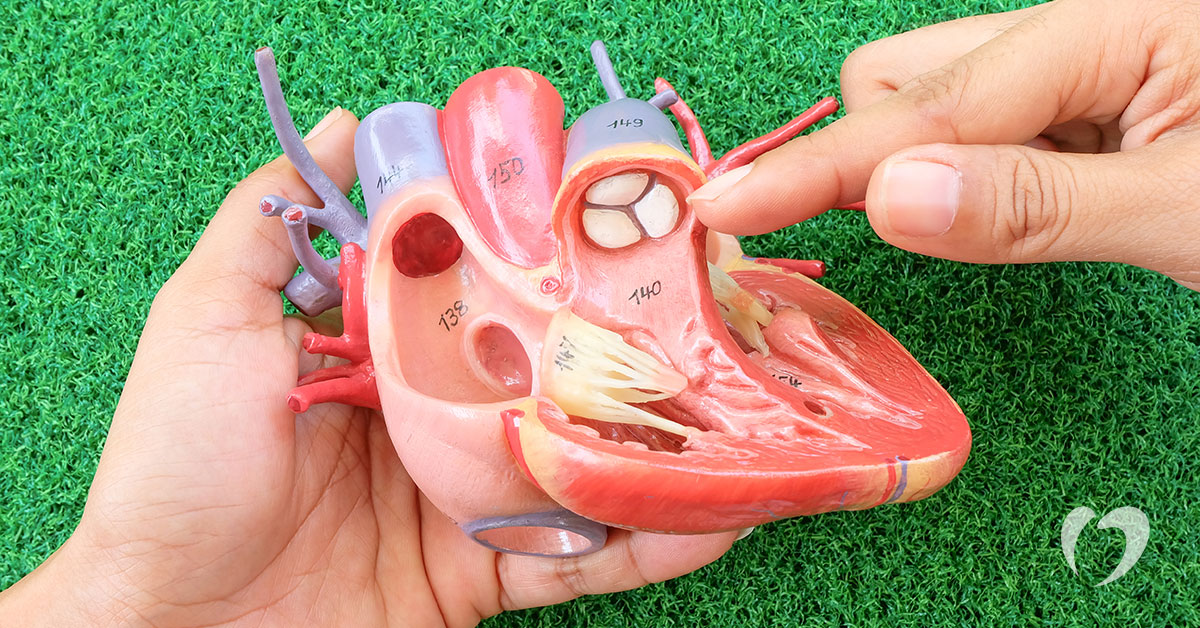Heart Valve Disease: Types, Causes, and Symptoms

There are four valves in the heart responsible for controlling the volume and timing of blood pumped through the heart. These valves open to allow blood into the next chamber of the heart and close to keep blood from flowing backward as the heart beats. Heart valve disease can cause these valves to not operate properly.
Understanding the causes and symptoms of heart valve disease begins with understanding the structure of the valves and types of disease that affect them. Each valve is made up of three flaps or leaflets that open and close during a heartbeat. If they do not open or close properly, blood flow can be restricted.
- Regurgitation is a version of valve disease that happens when the flaps do not close effectively and let blood flow backward into the previous chamber.
- When flaps begin to narrow, thicken, or stiffen, stenosis occurs, which reduces the amount of blood flowing through the valve.
- The final type of valve disease, called atresia, occurs when the leaflets are fused or missing.
Causes of heart valve disease
There are three main causes of heart valve disease: congenital conditions, age-related conditions, and those caused by injury or illness.
Congenital heart valve disease
Congenital defects are heart valve issues that happen when the valves fail to fully develop before birth. These defects range from mild to life threatening. Life threatening valve disease is often detected on imaging exams before birth or shortly after birth and requires immediate intervention. Atresia is one such type of valve disease. Because the valve is missing or fused, blood cannot flow throughout the heart, and immediate surgery is necessary.
Other congenital valve disease can be mild and not detected until later in childhood or into adulthood. Symptoms of mild congenital valve disease include tiring easily, particularly when engaging in sports or other activities. Certain types of stenosis and leaky valves can also be present from birth.
Age-related conditions
Age is a risk factor for many types of heart valve disease. As we age, calcium deposits form in the heart and around the valves. This creates stenosis, or heart valves that are thicker and stiffer than they should be. Older people also have higher risk of other conditions that can result in heart damage and valve problems, such as heart attacks or coronary heart disease.
Injury and illness
Certain viruses, bacteria, and injuries are known to cause valve disease. Rheumatic heart disease is brought on by streptococcal infections that are not treated or not fully treated and can lead to stenosis of the valves. Some bacteria cause infective endocarditis, an infection of the heart valves and the inner lining of the heart. Infective endocarditis requires treatment to prevent permanent damage. Those with other heart conditions are at higher risk of infective endocarditis and may be required to take preventative antibiotics before certain procedures. Trauma to the chest can also cause damage to the heart and result in valve disease.
Symptoms of heart valve disease
Heart valve disease includes a range of conditions with varying severity. Severe congenital conditions are often diagnosed before birth or at birth and require immediate medical intervention. However, more mild forms of valve disease may go undetected for many years or may develop later in life. When symptoms do occur, they include:
- Shortness of breath
- Chest pain
- Dizziness
- Fatigue
- Palpitations
- Swelling in the extremities
- Symptoms that become worse with activities
People experiencing these symptoms should schedule an appointment with their primary care physician or contact Oklahoma Heart Hospital to schedule an appointment with one of our specialists.
